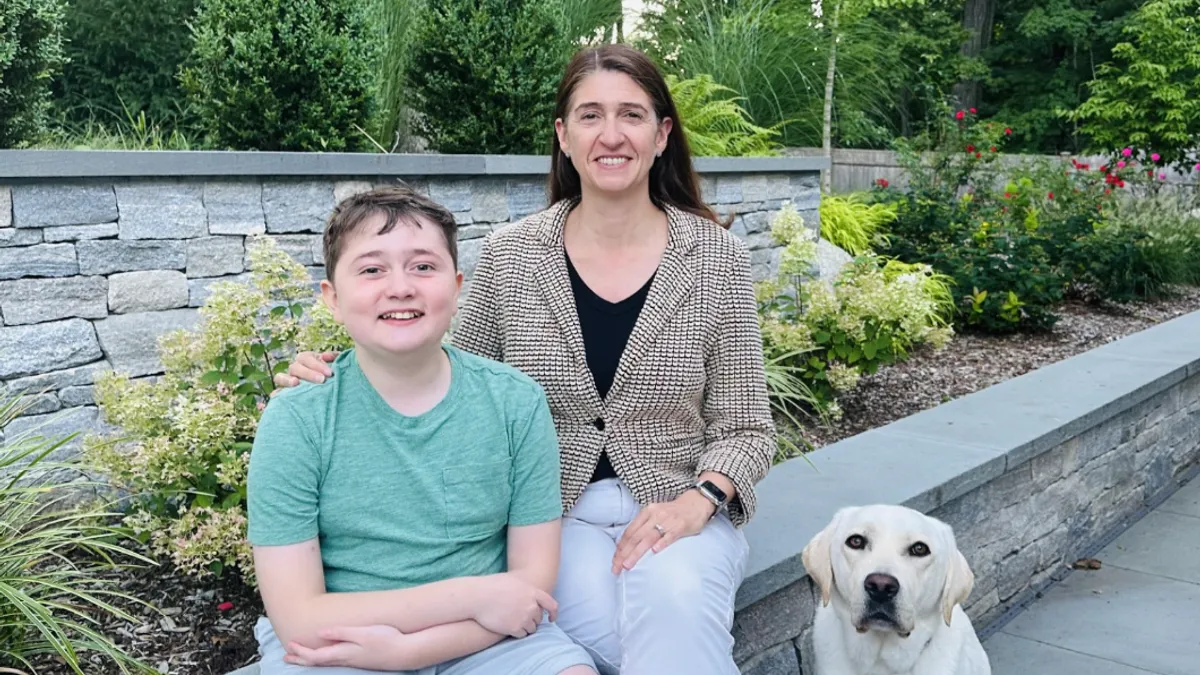In 1991, Michael J. Fox was 29 years old filming “Doc Hollywood” when he noticed a tremor in his pinky finger. The nagging symptom led to a life-changing diagnosis, young-onset Parkinson’s disease, which is more commonly diagnosed after age 50.

For years, he carefully hid the progressive brain disorder, until he no longer could. In 2000, he went public, becoming the face of Parkinson’s and founding the Michael J. Fox Foundation for Parkinson’s Research, which has since raised more than $1 billion dollars in its push toward a cure for this central nervous system disease. Fox’s diagnosis fortuitously came when Parkinson’s research was in need of a push, and it got one from his familiar face and star power.
“The genetics of Parkinson's were really just getting off the ground,” said Brian Fiske, the foundation’s chief scientific officer. “There were a couple of genes that had been linked to the disease that were starting to point at mechanisms that might be relevant,” but scientists were still in the early stages of understanding.
“I think his coming on board brought the field together,” Fiske said. “Suddenly, people were coming out of the woodwork to study Parkinson's.”
In two decades, the Michael J. Fox Foundation has contributed to many scientific leaps that have shed light on the genetics and science of this debilitating neurological disease, the second most common next to Alzheimer’s. Parkinson’s is unpredictable, thought to be driven by a complex interplay of genes and environmental factors, such as exposure to metals, solvents or pesticides or head injuries. Fueled by these new understandings, pharmaceutical companies are moving closer to disease-modifying drugs, although the bulk of them are still in early stage trials.
Some of these drug candidates are taking a page out of the Alzheimer’s playbook, targeting toxic clumps of proteins in the brain called alpha synuclein — a different type than the tau and amyloid-beta proteins that are the focus of Alzheimer’s research. These sticky proteins collect in the brains of people with Parkinson’s and are thought to cause damage.
“Clumping of this protein in the brain is associated with, we think, a huge percentage of cases of Parkinson's disease,” Fiske said. Researchers hoped that targeting this protein will make a difference for patients, similar to what’s happening in the Alzheimer’s field with drugs, such as the recently approved Leqembi, an amyloid-beta targeting antibody.
Multiple companies are now testing alpha synuclein-targeting drugs, among them, MODAG’s small molecule drug Anle138b, Prothena/Roche’s Prasinezumab and an alpha-synuclein-targeting vaccine ACI-7104 from AC Immune in Switzerland, which is now in phase 2.
“Some of them are targeting alpha synuclein in a very direct way by getting rid of the clumps, and some of them are trying to target the mechanism for making the clumps in the first place — others are trying to target the downstream effects of the clumps,” Fiske said. “So, there's a variety of different ways that companies are looking at this sort of alpha synuclein protein pathway linked to Parkinson's disease.”
A biomarker breakthrough
The foundation announced a breakthrough in April — the discovery of a Parkinson’s biomarker that could speed progress. Researchers detected abnormal alpha synuclein protein in spinal fluid, using an α-synuclein seeding amplification assay. Researchers are now using this test to identify people with this abnormal protein to determine who might benefit the most from investigational drugs and to gauge therapeutic response. However, because the test is invasive, requiring a draw of spinal fluid, it’s not yet been useful as a screening test. The hope is that scientists will find a way to convert it into a more user-friendly diagnostic, Fiske said.
“Now that we have this measuring tool, this biomarker, paired with those (alpha synuclein-targeting) approaches, we think we can see some real momentum and excitement in coming years,” he said.
Another potential disease-modifying approach involves targeting mutations in the glucocerebrosidase 1 (GBA1) gene, which increase the risk of an earlier onset, more rapidly progressing form of Parkinson’s.
"When we look at the therapeutic pipeline for Parkinson's disease, there's a lot of hope and promise in it."

Brian Fiske
CSO, Michael J. Fox Foundation for Parkinson’s Research
“GBA is a protein that's involved in helping the cell get rid of debris through a pathway called the lysosome,” Fiske said.
When this clearing mechanism breaks down, debris accumulates, impairing cell function. Bial Therapeutics is exploring a drug, BIA 28-6156, now in phase 2 to boost this mechanism and hopefully improve function. Another target, and the focus of Denali Therapeutics’s drug BIIB122/DNL151, is mutations in the LRRK2 gene, the most common genetic risk factor for the condition, which also causes lysosomal dysfunction.
Tackling symptoms
In addition to disease-modifying drugs, companies are also looking to improve treatment for Parkinson’s symptoms. Most investigational Parkinson’s drugs, and nearly all of those approaching the finish line, target motor and movement symptoms, a hallmark of the disease. Many of these drugs are modifications of existing drugs that are aimed at improving performance, Fiske said.
The most commonly prescribed Parkinson’s drug, levodopa, which is often used in combination with carbidopa to treat motor symptoms such as tremors, rigidity and involuntary muscle movements, came on the market more than five decades ago. It works by replenishing dopamine in the brain that is lost when dopamine-producing nerve cells die off.
But this mainstay treatment has some drawbacks, namely that it wanes throughout the day, leading to inconsistent symptom control, and it doesn’t work as well in people with advanced disease.
Some pharma companies are trying new delivery methods to provide steady symptom control, even in later-stage Parkinson’s. AbbVie is testing an implantable infusion device, ABBV-951, that delivers a steady dose of carbidopa and levodopa under the skin using a pump. The drug recently ran into a snag on its way to approval when the FDA issued a complete response letter asking for more information about the device.
Another levodopa-based drug, IPX203 from Amneal Pharmaceuticals, also ran into trouble when the FDA requested more information about the safety of one of the drugs in its extended-release capsule. These missteps probably won’t be a death knell for these drugs, but rather bumps along the way to approval, Fiske said.
However, while Parkinson’s-related movement disorders get a lot of attention from pharma companies, other Parkinson’s symptoms have largely been ignored, and they deserve more attention, Fiske said.
“A lot of people with Parkinson's suffer nonmotor symptoms. These can be anything from constipation to thinking problems to problems with blood pressure — there are a whole variety of different nonmotor symptoms,” Fiske said.
Currently, people cobble together a treatment approach using a variety of drugs targeting each symptom, such as constipation or depression.
“Sometimes that works, sometimes it doesn’t,” he said, so there is a need for better, Parkinson’s-specific options.
Researchers are also testing drugs, for Parkinson’s that are already in use for other conditions. One is the GLP-1 diabetes drug exenatide, which showed promise in slowing Parkinson’s progression in phase 2, and is now in phase 3. Even if this and other drugs don’t pan out, they could inspire new discoveries, Fiske said. This was already the case with the Inhibikase Therapeutics drug IkT-148009, which is similar to nilotinib, a cancer treatment that showed potential in Parkinson’s but ultimately fell short.
Overall, the Parkinson’s field has made steady progress, Fiske said.
“When we look at the therapeutic pipeline for Parkinson's disease, there's a lot of hope and promise in it,” he said. “We're seeing a lot of programs that are in later stages of testing, and a few have gone up for FDA consideration over the last year — we're starting to see this continued momentum in the pipeline, which is really great to see.”



















